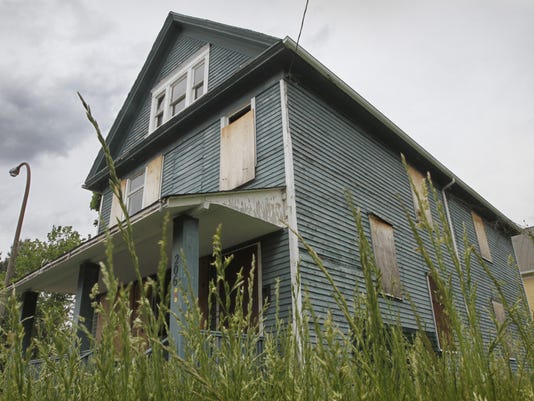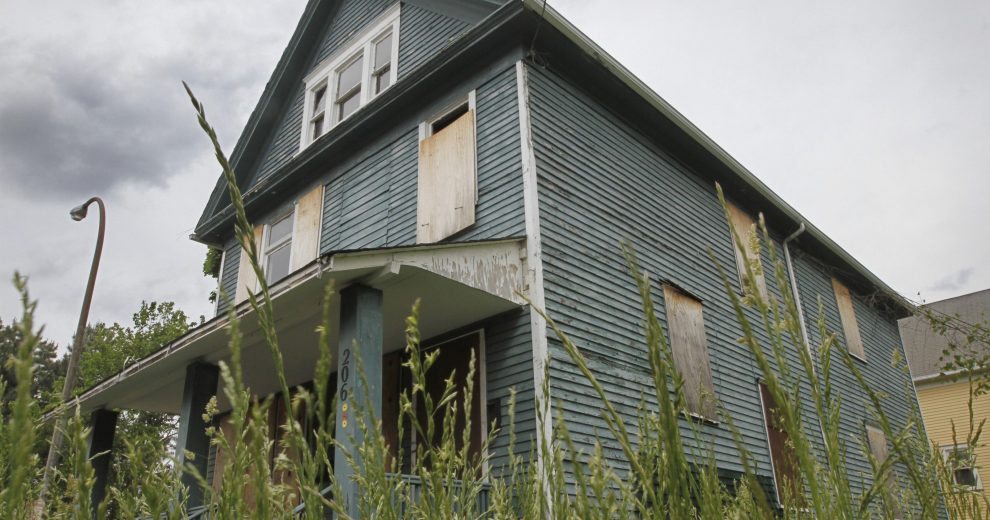La complejidad de la labor contra la pobreza deja a los residentes confundido. (Abril de 2017)
Patti Singer, Tina MacIntyre-Yee

A boarded up house on N. Union St. in Rochester is one of dozens of “zombie” properties in the city.(Photo: SHAWN DOWD/@sdowdphoto/STAFF PHOTOGRAPHER)
The ambitious and expensive anti-poverty efforts underway in Rochester did not keep the city’s poverty rate from growing even higher over the last five years, according to newly released data from the U.S. Census Bureau.
Several indicators worsened slightly in the five-year period from 2013-17 compared to the preceding five years of 2008-12, reconfirming Rochester as one of the most desperately poor places in the country, and the poorest city of its size:
The federal poverty line in 2017 was $24,600 for a family of four, or $12,060 for one person. In other words, about 32,000 people in Rochester are living on about $230 a week.
As usual the burden fell most heavily on women, children and minorities. More women were under the poverty line than men; black, Hispanic, multiracial, American Indian and Asian people were all much poorer on average than white people in the city, who nonetheless had a 25.1 percent poverty rate.
Nearly 25,000 children in Rochester live beneath the poverty line, including 7,000 under the age of 5.
The worsening statistics meant Rochester leapfrogged Dayton, Ohio, in becoming the third-poorest city among the 75 largest in the country. Only Detroit and Cleveland have higher percentages of their residents in poverty.
Among comparable-sized cities, Rochester continues to be the worst in the country in poverty, childhood poverty and extreme poverty. As in other cities, the poorest areas in Rochester are those that saw systematic disinvestment in housing and social services throughout the 20th century.
Poverty in the Monroe County suburbs (that is, the county excluding the city) was essentially unchanged between the two five-year periods: 7.8 percent poverty, 9.3 percent child poverty and 3.8 percent extreme poverty.
The statistics were presented in part by ACT Rochester and the Rochester-Monroe Anti-Poverty Initiative, the organization tasked with coordinating local anti-poverty work. It was launched in 2015, in time for the second half of the five-year period that the most recent census data addresses, but did not begin its actual work until after then. The five-year estimates are based on significantly more data than one-year estimates and therefore are considered more reliable.
“These results underscore the importance of a systemic approach to address the pervasive, longstanding and deeply rooted poverty that plagues our community,” Leonard Brock, the initiative’s executive director, wrote in a statement.
JMURPHY7@Gannett.com
This content was originally published here.
EL 2 DE JUNIO DEL 2024 VOTA PARA MANTENER
TU LIBERTAD, LA DEMOCRACIA Y EL RESPETO A LA CONSTITUCIÓN.
VOTA POR XÓCHITL













Comentarios